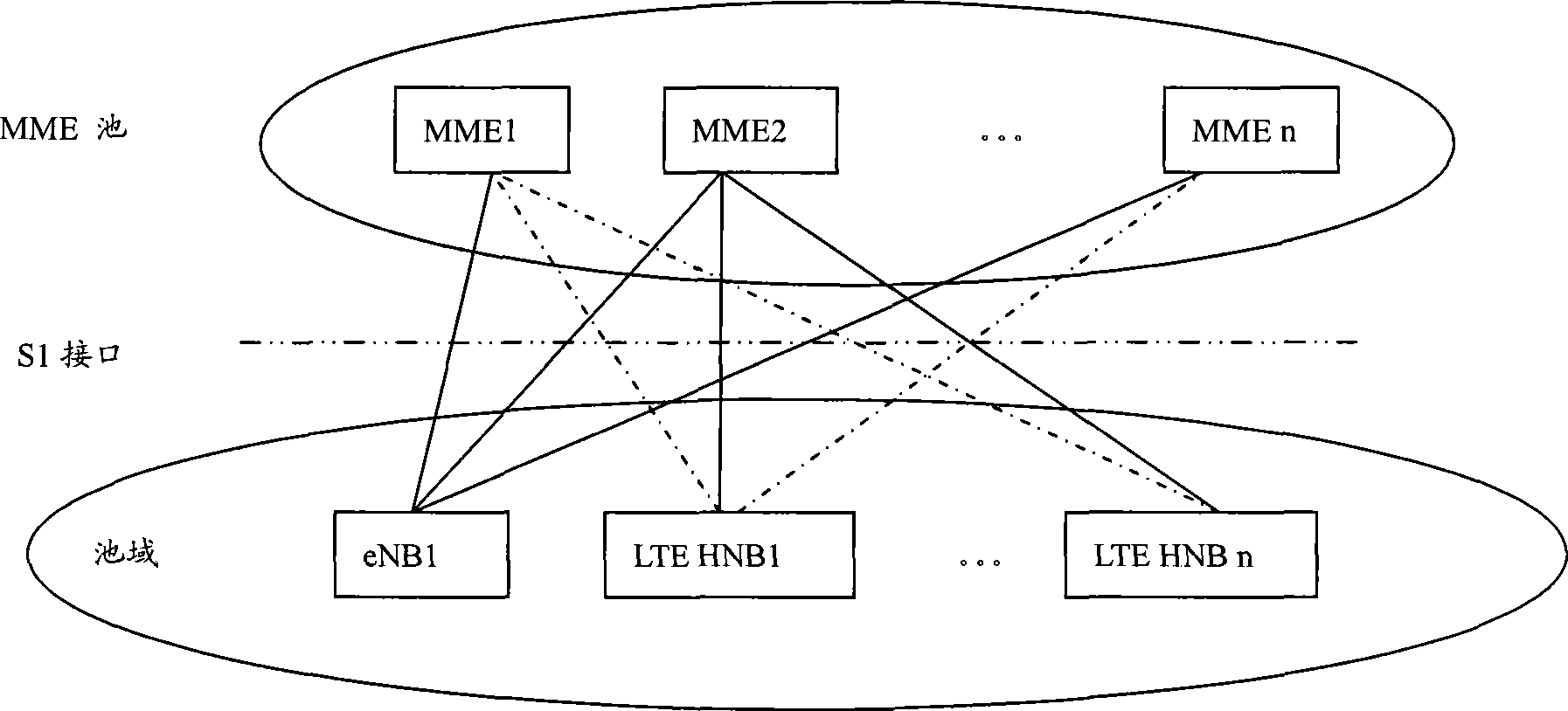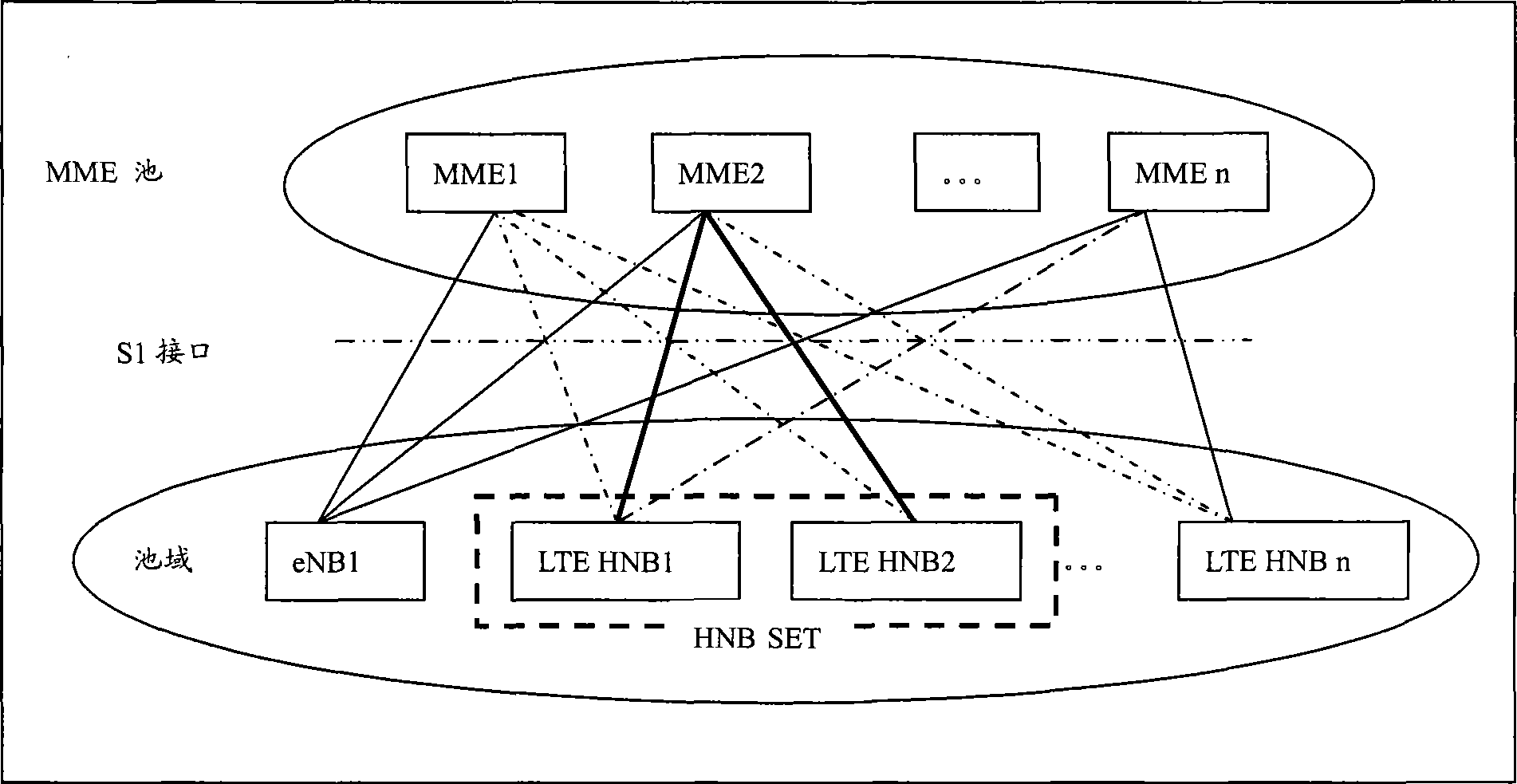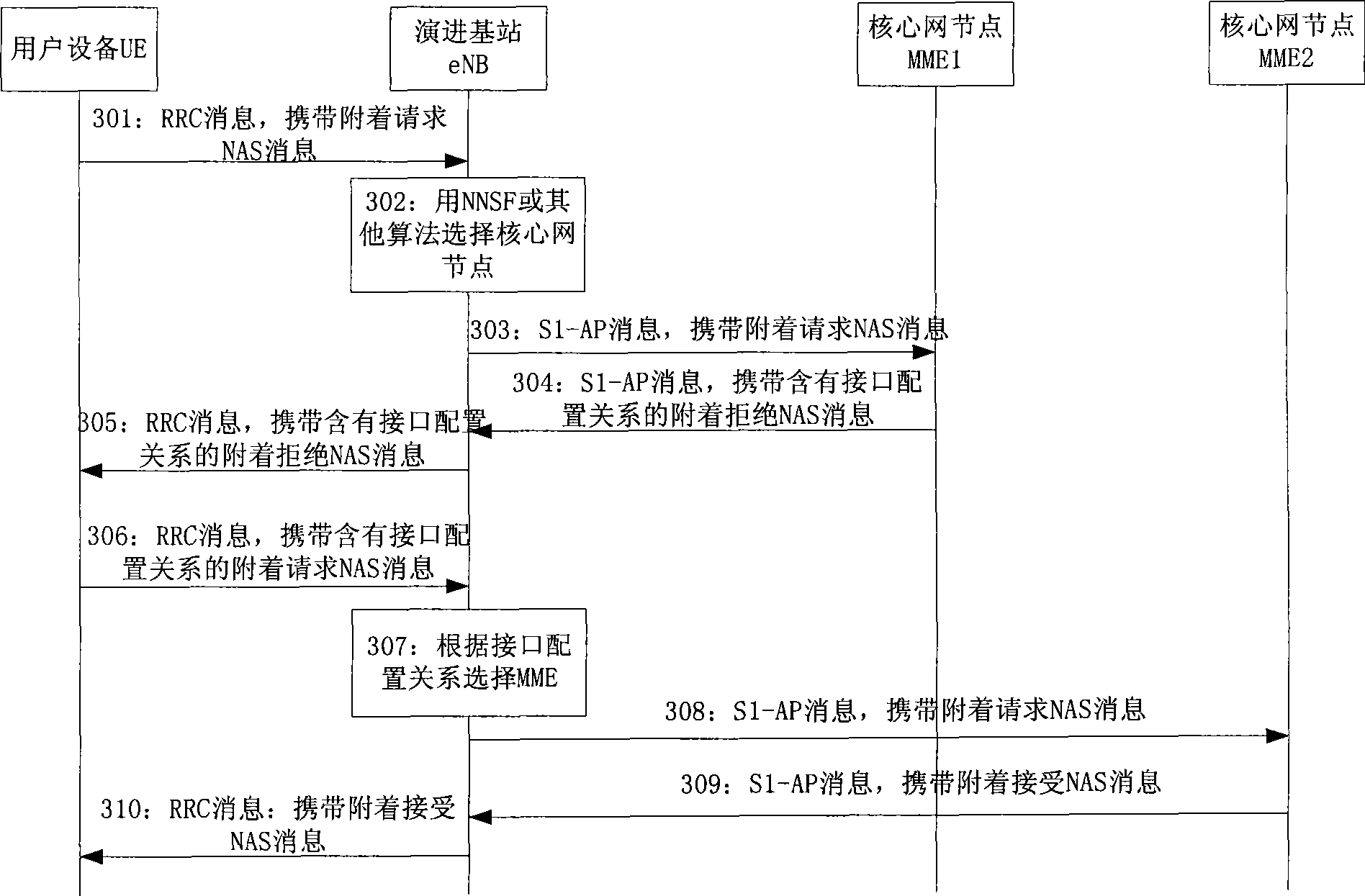Method for messaging in routing non-access layer
A non-access layer message and message technology, applied in access restriction, electrical components, wireless communication, etc., to reduce the impact
- Summary
- Abstract
- Description
- Claims
- Application Information
AI Technical Summary
Problems solved by technology
Method used
Image
Examples
Embodiment Construction
[0027] In order to make the purpose, technical solutions and beneficial effects of the embodiments of the invention more clear, the specific implementation manners of the embodiments of the invention will be described in detail below in conjunction with the accompanying drawings.
[0028] In the embodiment of the present invention, the access network node and the core network node may be eNB and MME in the SAE / LTE system respectively, and at this time, the interface between the eNB and MME is the S1 interface, or the RNC and SGSN in the UMTS system, At this time, the interface between the RNC and the SGSN is the Iu interface. In the embodiment of the present invention, the SAE / LTE system is taken as an example for description. The interface configuration relationship referred to below refers to the interface configuration between the UE and the HNB and / or between the HNB and the core network node.
[0029] The embodiment of the present invention first proposes a method suitab...
PUM
 Login to View More
Login to View More Abstract
Description
Claims
Application Information
 Login to View More
Login to View More - R&D
- Intellectual Property
- Life Sciences
- Materials
- Tech Scout
- Unparalleled Data Quality
- Higher Quality Content
- 60% Fewer Hallucinations
Browse by: Latest US Patents, China's latest patents, Technical Efficacy Thesaurus, Application Domain, Technology Topic, Popular Technical Reports.
© 2025 PatSnap. All rights reserved.Legal|Privacy policy|Modern Slavery Act Transparency Statement|Sitemap|About US| Contact US: help@patsnap.com



